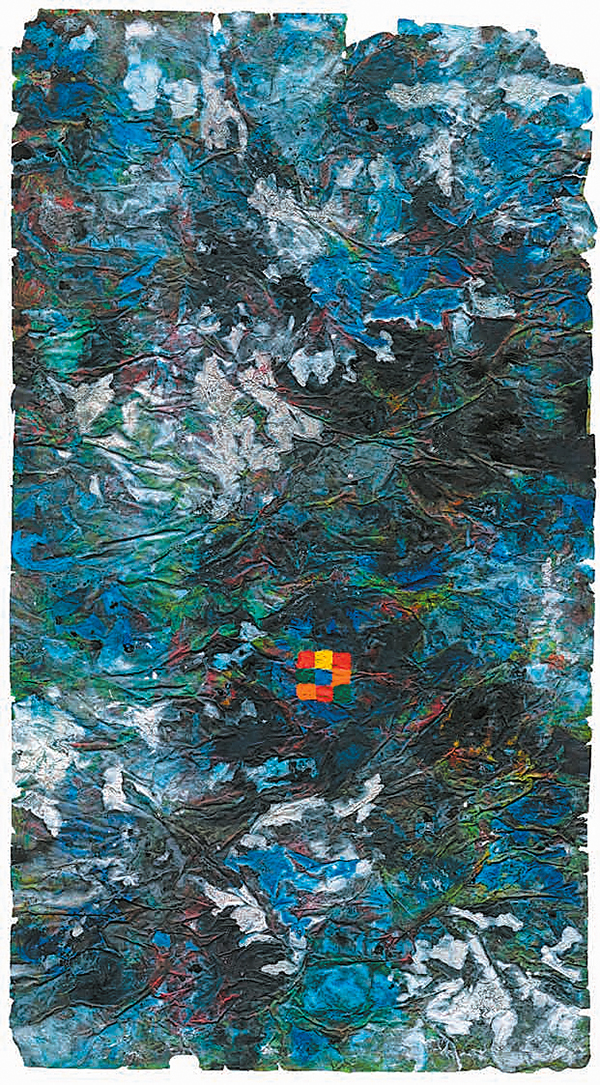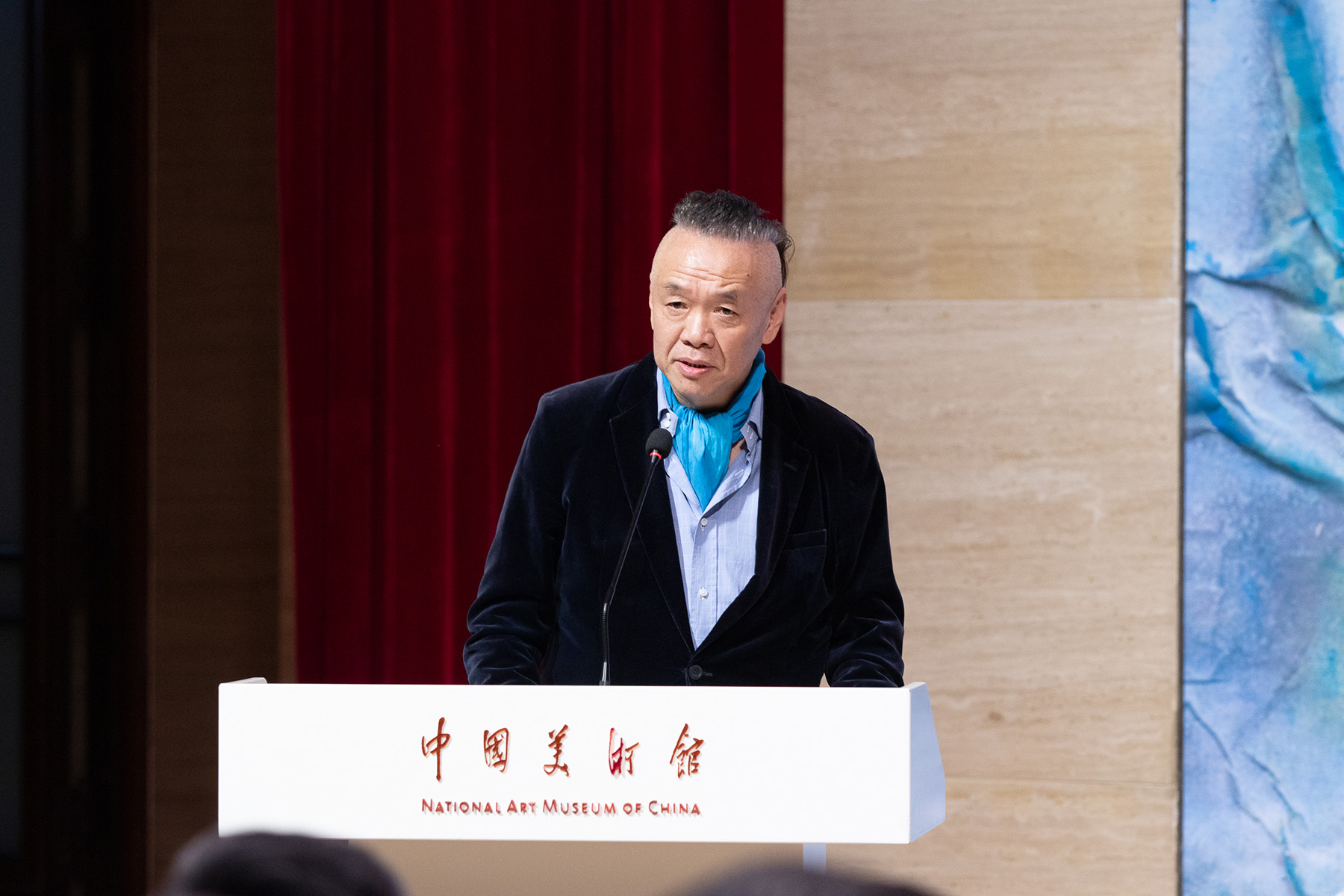Exhibition interprets the 24 solar terms with creased paper, vibrant pigments and abstract compositions, Lin Qi reports.

When Xu Dongdong's Beijing exhibition opened on Saturday, people in the city had already embraced the seasonal changes that mark the end of autumn: Two days earlier, shuang jiang (Frost's Descent), the last solar term of autumn, arrived to bring colder days, diminished sunlight, and trees in shades of red and yellow.
The ancient Chinese developed 24 solar terms to divide a year into different segments, in accordance with varied climates and phenological phenomena. Initially used to guide agriculture, the system remains relevant today, influencing daily routines such as clothing and diet, and serving as a reminder of nature's rhythms.
For example, Frost's Descent also signifies that wild animals begin hunting for winter, tree leaves fall, and insects retreat to their nests. These new phenological patterns are also depicted under Xu's painterly brushes, although in a more abstract, expressive manner. His paper is creased and folded, and vibrant colors orchestrate a symphony of autumn: red, green and orange evoke scenes of trees and mountains, while dots of yellow and blue suggest lakes and rivers.


Born in 1959, Xu has spent the past decade completing a painting series titled 72 Pentads of 24 Solar Terms, which captures the wisdom embedded in the 24 solar term system through a nonfigurative approach. The series is now at the center of his ongoing exhibition, titled Dialogue of Civilizations and Inquiries Into Life, at the National Art Museum of China running through to next Thursday.
He says these uneven creases in the works represent the motions of qi (the energy, spirit) throughout the year that invigorate all life. "The paintings show the universe as a unity of different lives — an insect awakening to the call of spring or a tiger roaring in snow, a sudden rain cooling the summer heat or a storm at the beginning of fall. All are alive, beautiful and equal, achieving harmony with nature, an essential belief in Chinese philosophy."
The last time Xu held a solo exhibition at the National Art Museum of China was in late 1987. At the event, he "felt greatly encouraged as a younger-generation artist" — he was then 28 years old — to share his vanguard art experiments.

Born into a family of teachers and doctors, Xu forayed into the world of art at an early age, beginning with studies of classical Chinese paintings. His career, which has spanned nearly five decades, exemplifies the multiple orientations of an artist of his age, from traditional to contemporary methods, from two- to three-dimensional mediums.
The current exhibition also shows his evolution since the 1970s. The ink paintings in the classical style reveal the lessons he learned from ancient artists — how they viewed the position of humans in the universe. Works from the 1980s onward show his exploration of abstraction. A signature paper sculpture, Charm, features crinkled sheets of paper, written with calligraphic chapters, resembling the piles of strange stones in a classic Chinese garden.

The 72 Pentads of 24 Solar Terms series marks a new chapter of his career, says Wu Weishan, former director of the National Art Museum of China. "His colorful, ever-changing strokes create a spiritual domain in which the virtual and the real are infused … to reveal the rules of nature."
Yu Yang, the exhibition's curator, says Xu's work reflects the fusion of talent, courage and passion found in an artist shaped by both his homeland and by encounters with Western art movements abroad.
ALSO READ: A time to celebrate tradition
Yu, also a professor at the Central Academy of Fine Arts in Beijing, adds that while Xu creates to bridge Chinese and Western art, his creative journey ultimately returns to the deep roots of his own cultural heritage and philosophy. Whatever medium or method he employs, Yu says, Xu strives to express a poetic and spiritual world beyond words, revealing an intellectual's inner dialogue of self-reflection and cultural consciousness.
Contact the writer at linqi@chinadaily.com.cn


